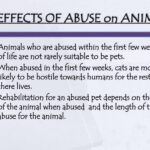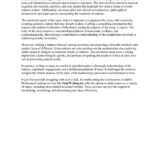In the dim shadows of humanity’s interactions with the natural world, a particularly horrifying phenomenon emerges: animal crushing. This term evokes images of brutality and suffering, yet many remain unaware of its gravity and implications. Within this discussion, we will explore the concept of crushing in the context of animal cruelty, its various manifestations, and the cultural and psychological underpinnings that allow such atrocities to persist.
Crushing, in this context, refers to the deliberate act of inflicting severe harm upon animals, often resulting in severe injury or death. It can manifest in multiple forms, from the more overtly violent actions—such as the physical stomping of an animal—to insidious acts that might go unnoticed until too late. In some cases, these cruel acts are perpetrated for reasons as trivial as entertainment, shock value, or, disturbingly, sexual gratification. The act of crushing is a grotesque intersection of power and vulnerability—a metaphorical giant squashing a diminutive creature, serving not only as an exertion of dominance but also as a reflection of society’s darker crevices.
To comprehend the phenomenon of animal crushing, it is imperative to acknowledge the role of desensitization in society. In an age saturated with graphic imagery and sensationalized media, individuals may become numb to violence. The incessant bombardment of violence in various forms of entertainment, from action films to video games, propagates an unsettling normalization of brutality. This cultural backdrop creates an environment where acts of animal cruelty, particularly crushing, are reported less frequently and are often viewed with detachment, if at all.
The psychological implications of animal crushing are profound and multifaceted. Perpetrators often exhibit a troubling disconnect from empathy. Certain studies suggest that a proclivity for inflicting pain on animals may correlate with deeper psychological issues, potentially functioning as a precursor to violent behavior towards humans. One could argue that beneath the surface lies a distorted mirage of power; a disillusioned individual seeks to elevate themselves through the palpable suffering of another being, though this elevation is built on a foundation of despair and moral decay. In this light, crushing transcends physicality, weaving itself into a larger tapestry of societal dysfunction.
Furthermore, the implications of animal crushing extend beyond the immediate act itself. The emotional and psychological toll on witnesses—whether they be humans caught in the act or fellow animals subjected to such brutality—can be profound. For instance, animal cruelty can perpetuate cycles of violence within a community, fostering an atmosphere of fear and distrust. This ripple effect highlights the interconnectedness of all living beings; what occurs against one creature often reverberates throughout an ecosystem and into human society.
Cultural perspectives on animals further complicate the issue of crushing. In certain societies, animals are viewed merely as commodities, stripped of their inherent value as sentient beings. This viewpoint can engender a cavalier attitude toward their suffering. Conversely, many cultures celebrate the bond between humans and animals, viewing them as companions deserving of respect and protection. This dichotomy raises critical questions about the ethical frameworks through which societies evaluate animal welfare. Thus, a struggle for compassion emerges, one that challenges individuals to confront their cultural narratives and redefine their relationships with the animal kingdom.
Legal frameworks often lag behind societal understanding of animal cruelty. In many jurisdictions, laws against animal cruelty may not specifically address the concept of crushing or may impose inadequate penalties for such heinous acts. This legal blindness contributes to a culture of impunity, emboldening offenders and perpetuating cycles of violence. Activism plays a pivotal role in addressing these challenges, pushing for legislative reforms that reflect a growing awareness of animal rights and welfare. Advocacy groups tirelessly work to illuminate this dark corner of the human experience, aiming to reshape societal attitudes and ensure that animals are granted their due justice.
Moreover, the role of education cannot be overstated in combating the chilling prevalence of animal crushing. From a young age, children should be guided to recognize and respect the lives of animals. Programs designed to foster empathy and compassion can serve to inoculate future generations against the allure of violence. Teaching the intrinsic value of all living beings and promoting kindness will cultivate a societal ethos that firmly rejects acts of cruelty. This kind of proactive approach is necessary for dismantling the culture of violence that allows crushing to persist.
Ultimately, the discourse surrounding animal crushing demands urgency and a collective response. The visibility of such acts, and the accompanying desensitization, require a multifaceted solution that includes education, legal reform, and a societal commitment to upholding the dignity of all creatures. As we reflect on the somber reality of animal cruelty, we must firmly grasp the central truth: the fight against these atrocities begins with understanding, and understanding must compel us to action. The metaphor of the giant crushing the small elucidates the systemic power imbalance that exists, igniting a fire within us to stand vigilant against this wave of cruelty. Changing the narrative surrounding animal welfare begins with each of us; together, we can forge a compassionate future, one where none of us stand silent in the face of suffering.







